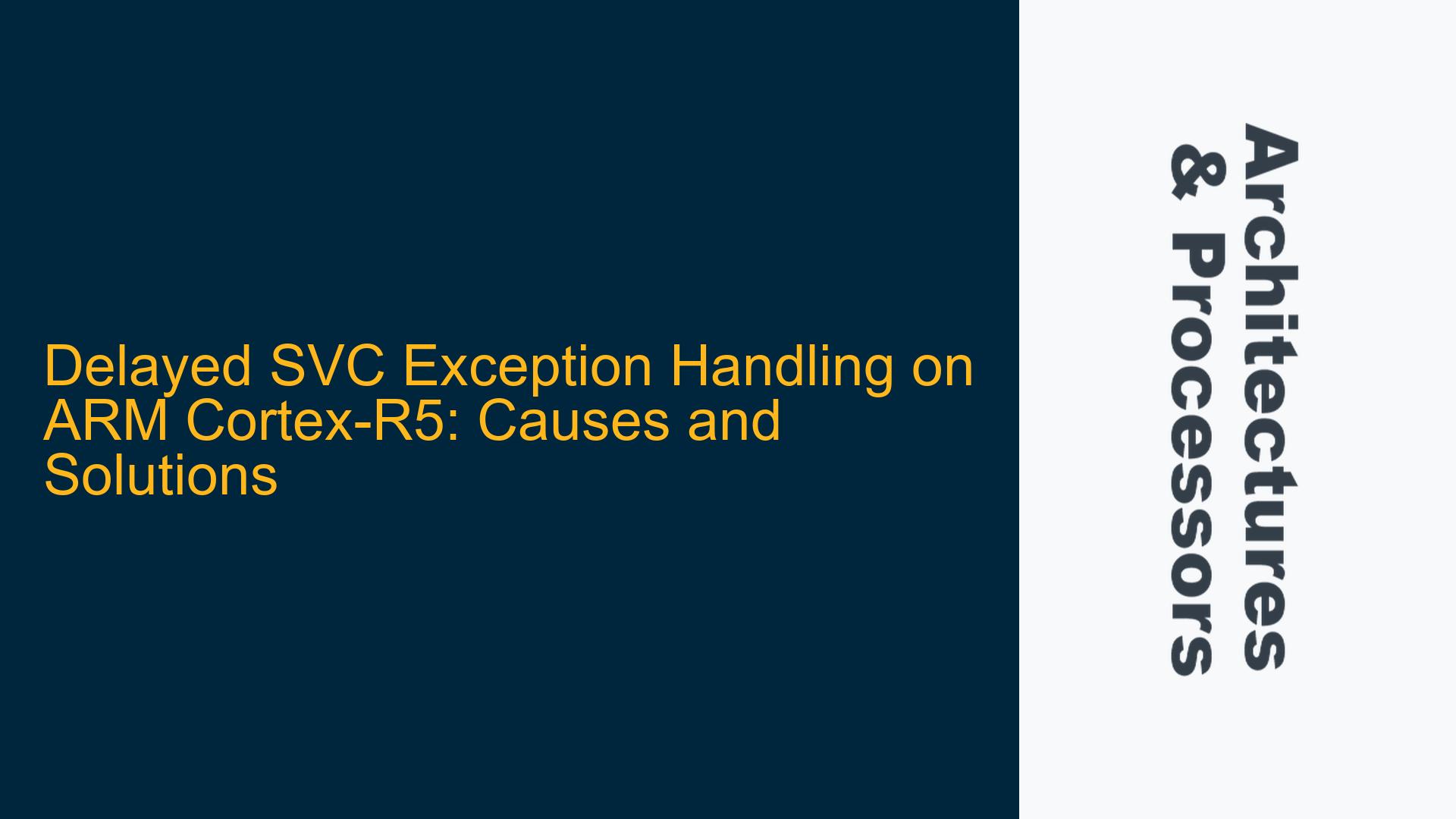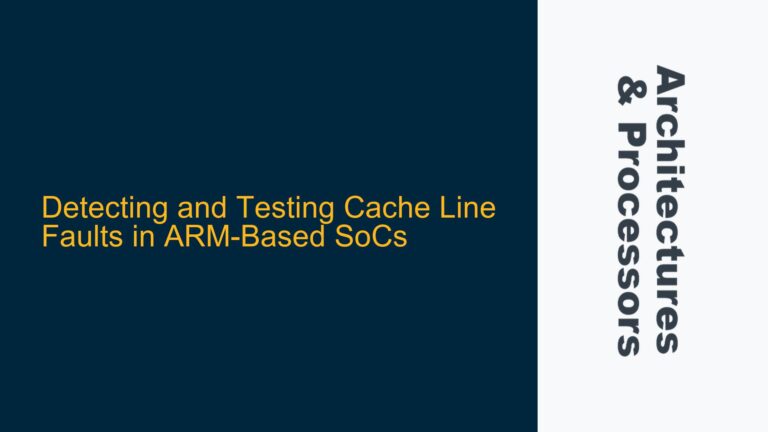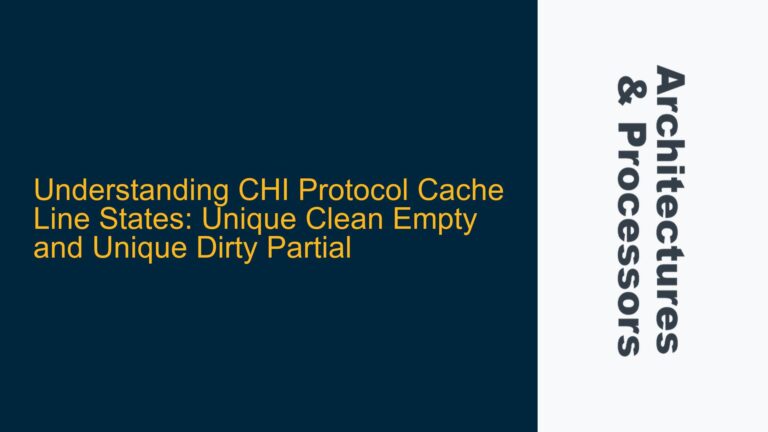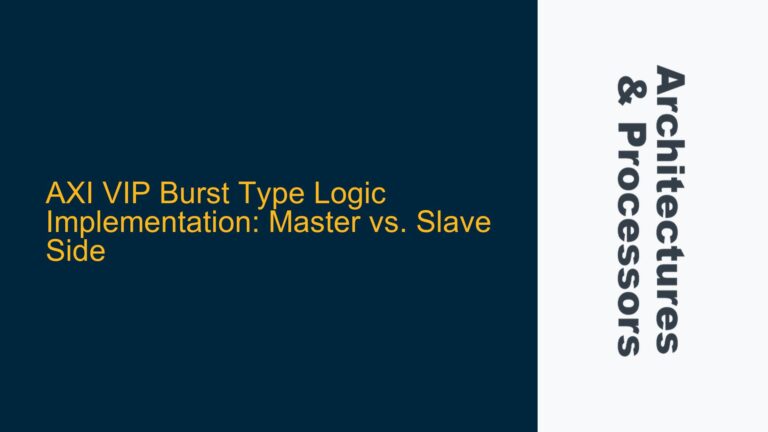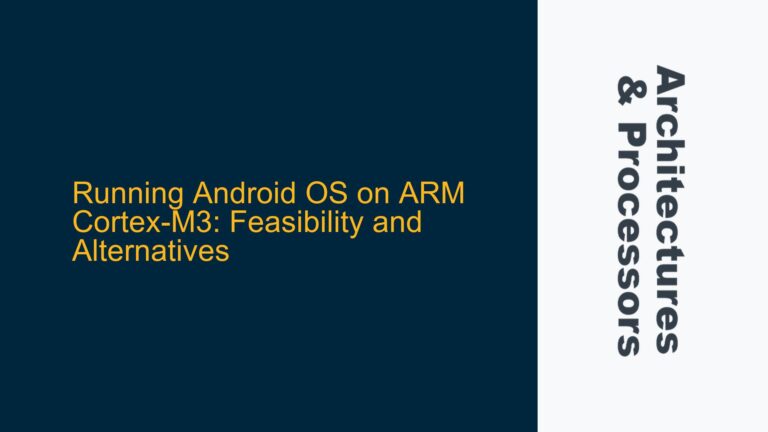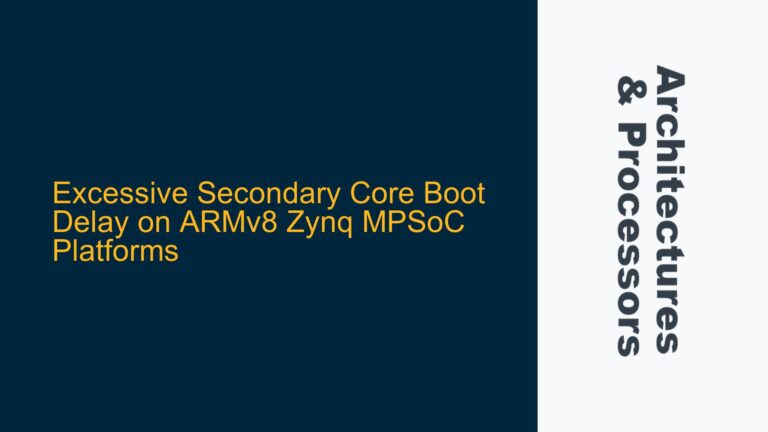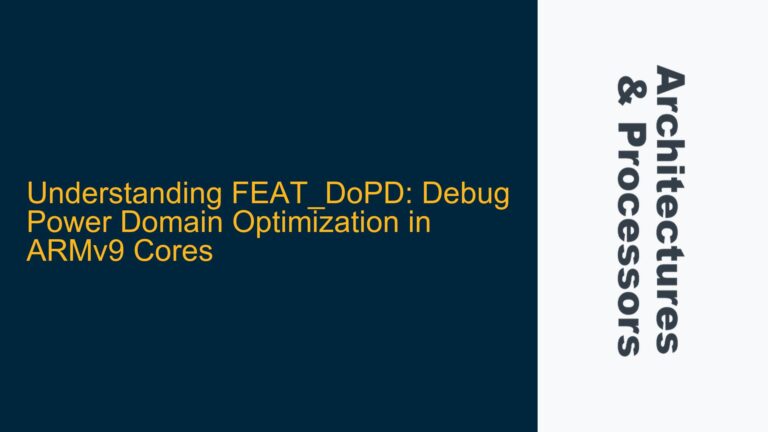ARM Cortex-R5 SVC Exception Handling Delay
The ARM Cortex-R5 processor is designed for real-time applications, where deterministic behavior and low-latency interrupt handling are critical. However, in some cases, developers may encounter unexpected delays when executing the Supervisor Call (SVC) instruction, specifically SVC #0xFF. This delay manifests as the processor continuing to execute subsequent instructions before jumping to the SVC exception vector. This behavior is particularly puzzling because it contradicts the expected immediate exception handling mechanism of the Cortex-R5. The issue is further complicated by the observation that placing a breakpoint on the SVC instruction resolves the delay, suggesting a subtle interaction between the debugger and the processor’s exception handling logic.
The SVC instruction is typically used to implement system calls or to switch from user mode to supervisor mode in ARM architectures. When the SVC instruction is executed, the processor should immediately halt the current execution flow, save the context, and jump to the SVC exception vector. However, in this scenario, the Cortex-R5 appears to defer the exception handling, executing additional instructions before servicing the SVC request. This behavior can lead to significant issues in real-time systems, where timing predictability is paramount.
The problem is exacerbated by the fact that inserting an Instruction Synchronization Barrier (ISB) after the SVC instruction does not resolve the delay. The ISB is designed to ensure that all preceding instructions are completed before proceeding, but in this case, it fails to enforce the immediate handling of the SVC exception. This suggests that the delay is not due to instruction pipeline effects but rather a deeper issue related to the processor’s exception handling mechanism or the surrounding software environment.
Pipeline Stalls and Exception Prioritization in Cortex-R5
The ARM Cortex-R5 processor features a dual-issue superscalar pipeline, which allows it to execute multiple instructions per clock cycle under certain conditions. However, this complexity can lead to pipeline stalls and delays in exception handling if the processor’s internal state is not properly synchronized. One possible cause of the SVC delay is a pipeline stall caused by an unresolved data dependency or a resource conflict. For example, if the SVC instruction is followed by instructions that depend on the results of previous operations, the processor may prioritize completing these instructions before handling the exception.
Another potential cause is the prioritization of exceptions within the Cortex-R5. The processor’s exception handling mechanism is designed to prioritize certain exceptions over others, such as non-maskable interrupts (NMIs) over SVC calls. If a higher-priority exception is pending or being serviced when the SVC instruction is executed, the processor may delay handling the SVC request until the higher-priority exception is resolved. This behavior can be particularly problematic in systems with complex interrupt hierarchies or nested exceptions.
Additionally, the Cortex-R5’s memory system and cache behavior can contribute to the delay. If the SVC exception vector is located in a memory region that is not cached or is subject to high access latency, the processor may experience a delay in fetching the exception handler code. This delay can be exacerbated by the processor’s branch prediction logic, which may incorrectly predict the target address of the SVC exception handler, leading to additional pipeline flushes and stalls.
Debugging and Resolving SVC Exception Handling Delays
To diagnose and resolve the SVC exception handling delay on the ARM Cortex-R5, developers should first verify the processor’s configuration and ensure that the exception vector table is correctly set up. The vector table should be located in a memory region with low access latency and should be properly aligned according to the Cortex-R5’s requirements. Developers should also check the processor’s exception priority settings and ensure that no higher-priority exceptions are interfering with the SVC handling.
Next, developers should analyze the pipeline behavior around the SVC instruction. This can be done using the processor’s performance counters and debugging tools to identify any pipeline stalls or resource conflicts. If a pipeline stall is detected, developers should review the surrounding code for data dependencies or resource conflicts that could be causing the delay. In some cases, reordering instructions or inserting additional synchronization barriers may help mitigate the issue.
If the delay is related to the memory system or cache behavior, developers should consider optimizing the memory layout and cache configuration. This may involve moving the exception vector table to a faster memory region, enabling caching for the vector table, or adjusting the processor’s cache policies. Developers should also verify that the branch prediction logic is correctly predicting the target address of the SVC exception handler and adjust the prediction settings if necessary.
Finally, developers should consider the impact of the debugger on the processor’s behavior. The observation that placing a breakpoint on the SVC instruction resolves the delay suggests that the debugger may be influencing the processor’s exception handling logic. Developers should test the system without the debugger attached to ensure that the issue is not related to the debugging environment. If the issue persists, developers should consult the processor’s documentation and errata sheets for any known issues related to SVC exception handling and apply any recommended workarounds.
In conclusion, the delayed SVC exception handling on the ARM Cortex-R5 is a complex issue that can arise from a combination of pipeline stalls, exception prioritization, memory system behavior, and debugging environment influences. By systematically analyzing and addressing these factors, developers can identify the root cause of the delay and implement effective solutions to ensure predictable and reliable exception handling in their real-time systems.
